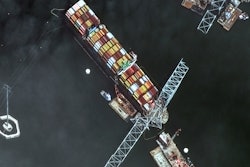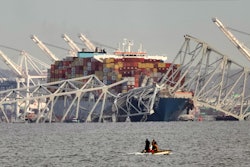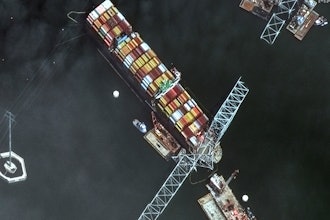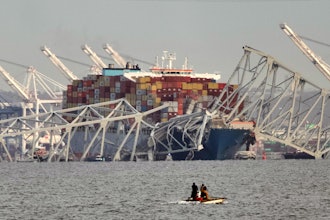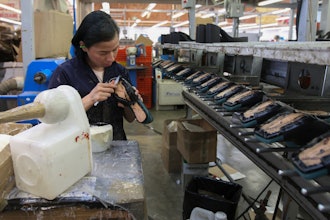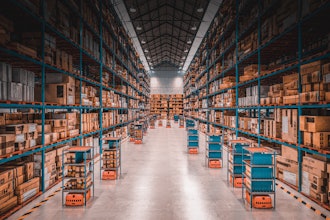The March 11 earthquake and tsunami in Japan has led to many supply chain disruptions around the globe, ranging from lack of raw materials to damaged facilities to missing personnel. Jeff Karrenbauer, President and Co-Founder, INSIGHT, Inc., a provider of supply chain planning solutions for the world's foremost companies, recently spoke to Industrial Distribution about the long-term supply chain effects of the Japan disaster and what industrial companies can do about them.
ID: In your opinion, what are some of the long-term global supply chain ramifications you expect to see come from the earthquake and tsunami disaster in Japan?
Karrenbauer: The biggest one is people are going to forget. If they can forget 9/11, they can forget this. You see it time and time again. I’ve been evangelizing about supply chain vulnerability and taking specific hardening options to reduce vulnerability for about seven years. I, like everyone else in this business, have come to the conclusion that people find reasons not to do it.
Japan will recover. It’s an advanced, industrialized society. They can rebuild the infrastructure, only to have it pounded again. I have no idea what the fallout is going to be from the nuclear power plant situation. I’m not sure anybody does.
You’d like to think that people would learn a lesson from all this. But why should we expect that they will. This is not the first tsunami, the first earthquake, first hurricane, or the first volcanic eruption. We’ve had a good (number) of those just in the last couple of years, and life goes on. One of my favorite expressions is that industry is placing the biggest bet in the history of Las Vegas. The bet is nothing is going to happen, or at least that it won’t affect me.
All too often, the strategic plan consists of activating a disaster team, calling a meeting, and saying “Let’s get the phone lines going” and asking “What are we going to do now?” I don’t consider that to be a very structured plan. But I fear that’s what is exactly going to happen, and unfortunately history is on my side.
ID: Why do you think there is such a reactive approach to these kinds of situations, as opposed to a more proactive approach?
Karrenbauer: There are about five particular answers, in no particular order.
Structured activity drives out unstructured activity. I spend days trying to get a hold of some of my clients. They finally get back to me and apologize profusely. They are in meetings, six to eight hours a day, every day. I ask them when they actually do anything, and their answer is this: after hours. They’re firefighting.
Second, they’ve been through so many downsizings, right-sizings, or resource adjustment actions. They’re down on staff and they don’t have anybody to do it. Then they go to an outside consulting firm, or they don’t do it at all. In the middle of a recession, which doesn’t explain the last 20 years of inaction, but when a CEO’s guidance is to spend nothing, they are not going to go out and commission a study to look at supply chain vulnerability and resiliency.
Third are business schools. Very few business schools teach anything worthwhile in the way of operations. It’s the mandatory core course that everybody loves to hate, usually because it is taught very badly.
The very ones that should be demanding prudent stewardship of the investment are the very ones that will nail you if you do it. The only thing they really understand is ratios, and the ratios don’t look that good. These things take time to implement. Some things are costly, other aren’t. It’s like buying insurance. You can’t cover everything. But you have to know where your vulnerabilities are.
The people that decide to do it; they don’t know where to begin. There are people that know how to do it. We do, and that’s not a commercial. We’re not the only ones. You have to sit down and really do a thorough supply chain vulnerability audit. It is part of an overall supply chain strategic plan, this is just one part of it. It’s done with formal analytical tools, and I don’t mean a spreadsheet. It can be done very rigorously, very quantitatively, and very precisely. But it requires commitment to do it.
But people don’t know where to begin. It’s going to take some time. It’s going to take some money, but sometimes it’s not that expensive. Sometimes you’ll even get an insurance break from your carrier if you do it, because they are reducing their risk.
The last reason is that there is a misapplication of Lean principles. I’m not an opponent of Lean. I think it’s wonderful. But people misapply it. Paradoxically, some of the stuff, like Lean strategies such as just-in-time, make us more vulnerable. Just-in-time is a very fragile strategy from a supply chain perspective. It’s fragile to snowstorms, much less earthquakes and tsunamis.
We have reduced cost at all cost, and we have worshipped at the altar of Lean for so long, that Plan B has disappeared. We get ourselves so Lean that we are vulnerable to disruption.
ID: You mentioned that some companies wouldn’t even know where to begin if they were asked to conduct a supply chain vulnerability analysis. Will you explain the process to me, as you would it explain it to them?
Karrenbauer: I’ll tell you what I tell people in the classroom. You need a supply chain design tool, which some people call a network design tool. This tool looks at the entire supply chain. Let’s say it is manufacturing. From source of raw material acquisition, through manufacturing, through all of finished goods distribution, it includes procurement, manufacturing, transportation, warehousing, duties and taxes if it is international, port handling charges, everything in the supply chain from your tier-x suppliers down to your customers. Now you need that tool to get a grasp of the whole thing. Putting that together sometimes reveals some rather remarkable stuff.
Once the tool is in place, then we can start to play games with it. Suppose systematically we start removing suppliers, or removing manufacturing sites, whether you own them or not is irrelevant, removing ports, or removing distribution centers. What does that do to us? A good network design tool with optimization technology will say that you’ve lost that capacity, so you’ve got to go around it. Or it says that you are in a hole and that you don’t have any effective way around this. I want to know, by rigorously looking at loses of capability, where I am most vulnerable. If I were to suffer such a loss, what would be the best plan to mitigate? Mitigation takes two forms. One is ex-post, which what most people do. But the other one is, if I war-game this in advance, then I can develop strategies. I may increase cost, I may take a hit on Wall Street, but I believe I’m decreasing vulnerability.
I think business would be well-served if they game two kinds of adversaries: random acts of nature and pre-mediated attacks by an intelligent adversary. These are the things that are worth thinking about in advance.
ID: Do you feel that in the near or distant future, companies will start to wise up to this?
Karrenbauer: I wish, but I don’t think we are going to learn our lesson. People forget and life goes on. We dodge one bullet and wait for the next one to see if we can dodge that one as well. Now is the time to strike.





